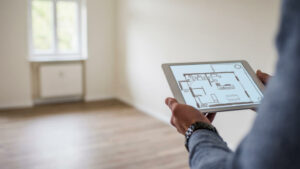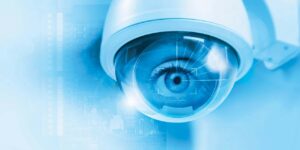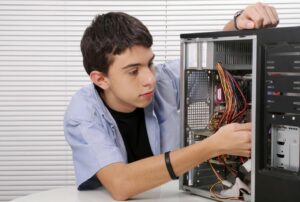Best guide to Security system installation services will be described in this post. Investing in a home safety system is a terrific method to safeguard your family and yourself, as well as your house and your possessions.
You have a lot better odds of preventing a burglary with a burglar alarm system as well, especially if you’re going to be gone for a prolonged period of time.
The installation of your system can always be done by a professional, but if you do it yourself, using this alarm system installation instructions, you can be sure that all the locations you wish to keep secure will be secured.
Guide About Security System Installation Services
Best GUIDE To HOME Security system installation services are explained here.
1. Step One: Get Your System
First, do your homework and choose a burglar alarm system that will suit your needs. Investing in something that can be expanded upon and modified anytime new software is released is a wise choice. With a backup battery, you could, for instance, install more security cameras or motion sensors than it originally came with.
This is crucial because you can decide later that you need cameras in areas of your home that you didn’t previously need them or that you want sensors installed on your windows to prevent burglars from breaking them.
Additionally, you can decide to remodel or rearrange your home, which might necessitate modifying your camera plans. To do this, ensure that the system you choose can be modified to meet your specific requirements. Also check bookkeeper services
2. Step Two: Plan Your Needs
Consider all the locations where a security camera would be useful as you look around your home. It is a good idea to install cameras above any doors that open to the outside.
Additionally, you should install cameras with motion sensors and a backup battery in any location where they can see the most, such as down corridors, up or down staircases, above garage doors, and most especially anywhere you keep really precious objects, such as your safe. If you want a comprehensive system, you should also consider the number of windows you have and how many sensors you need for each of them.
By knowing when windows are open, you can keep your family protected. Care must be taken while placing cameras and sensors to ensure that you and your family can continue to utilise your home as you see fit. You want them in locations where they will pick up anyone in your home who shouldn’t be there, but far enough out of the way that you won’t run over them while moving around or hanging up new stuff.
After all, isn’t that the very goal of the system?
3. Step Three: Get the Equipment
Make sure you get all of the additional equipment you’ll need. Make sure you purchase all of the cameras you’ve planned on as well as a few extras because you’ll need plenty of them. In order to set up everything at once and avoid having to worry about going back to the store while you’re in the middle of getting everything hooked up, make sure you also get all the sensors and motion detectors you will require.
Make sure your cameras are of a good quality and will perform as you want. Consider the differences in picture quality ratings and the pros and downsides of black-and-white versus full-color security systems. Also check proxy server.
A higher-quality image will cost you more money, but in the long term, it can be well worth the additional expense. You don’t want to get a subpar system that won’t provide you with the image or information you require in the event of an emergency. Consider the system you will receive with it as well as how you will be able to review the cameras.
To preserve your peace of mind, you want a computer monitoring system that will let you browse through everything you need and that will assist you in making copies or locating specific items.
Instead of only alerting a security company if someone enters without a passcode, you might want a system that will also alert you or the alarm provider to certain events.
All of these items will assist you in keeping everyone and everything that belongs to you safe and secure while you are home and even while you are not home, which is an essential component of any security system.
4. Step Four: Set it up
Bring your system home and prepare to set it up after that. As you unpack it, you should check each of the cameras, sensors, and motion detectors to ensure that they are of the calibre you expect and that you can depend on to keep you and your family safe. Make sure you have a monitoring system in place for your new system as well.
Either you keep an eye on everything yourself or you set up a service to keep an eye on things for you. Start setting up your cameras after that. The cameras will need to be wired throughout the entire house and connected to your electrical system, but other than that, installing them yourself or having a professional do it shouldn’t present any problems.
The important thing is to make sure that everything is connected correctly, and to keep working on it until it is. If you have any doubts, you should consider having a professional installation done.
5. Step Five: Check Your System
If your alarm is set, you want to be sure that it is monitoring everything you think it is, so make sure you check each one. Make sure the window sensors activate as expected by checking them. Check each camera to ensure that you can see it on the monitoring screen and, most importantly, that it is continuously recording.
When you return home after an hour or two of being away, turn on the cameras and alarms, and then review through the film to make sure you have everything. Examine how the cameras are pointed and how well they capture the images you want.
Verify that nobody is in the way of any of the cameras and that they are all recording as you anticipate.
6. Step Six: Continue Monitoring
To ensure that your cameras and sensors are functioning as you require, you should constantly examine them. The only way to guarantee that you are aware of any issues as soon as they arise is to ensure that the system is continuously monitored. Keep an eye on things & make sure you are always changing or correcting cameras that don’t seem to be performing as you need them to.
In this manner, you can be certain that you will always have evidence in case someone breaks into your home or if something happens while you are away. Wherever you’re recording, be sure you never run out of room. After all, if you weren’t recording, you wouldn’t have any documentation if you later encountered an issue.
This means that you should have enough tapes, hard drive space, or other resources to store the camera’s data for at least a week or two at a time. In the event that someone appears on camera, be careful to save the recording and provide the police a copy.
7. Step Seventh: Set Your Alarm
Make sure your alarm is always on if you’re not at home. You and your family will remain safe, as well as your home, thanks to that alarm. When you’re not there, make sure to leave it on and make sure the cameras are recording even at night. When you need the system the most, you don’t want to be vulnerable because it could lead to longer-term issues that are far worse.
For instance, it won’t help you much if the camera is not recording when someone breaks in. You & your home have a lot of options on how to keep yourselves safe and safeguard your house. An alarm system will make a bigger difference, and the better you install it, the better off you and your family (and your home) will be. It is obviously important to keep your doors and windows closed and locked at all times and to keep expensive things out of the line of sight of potential burglars.
Make sure you have something that keeps an eye on every region of your house every day. It will undoubtedly improve your mood and enable you to potentially save a great deal more money.




